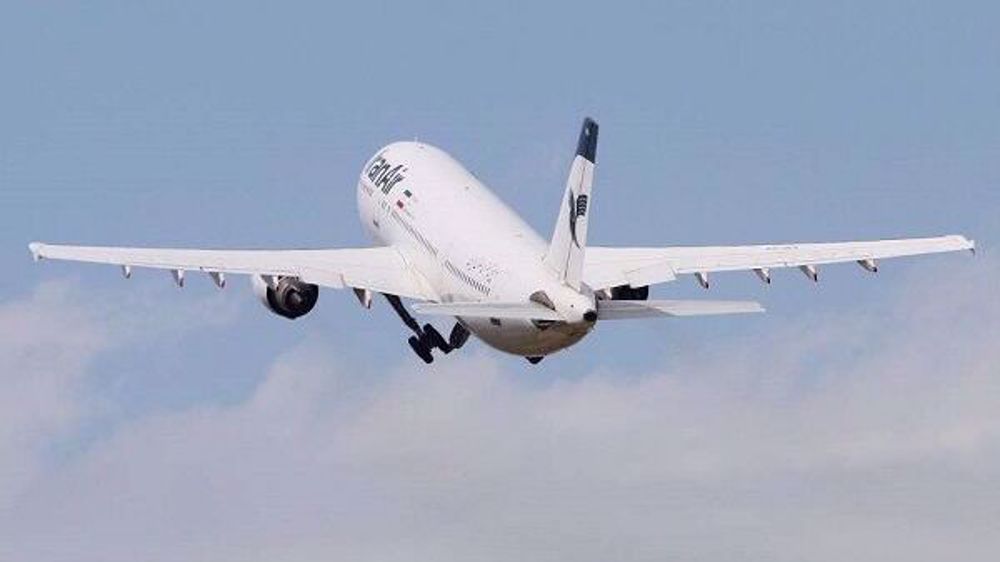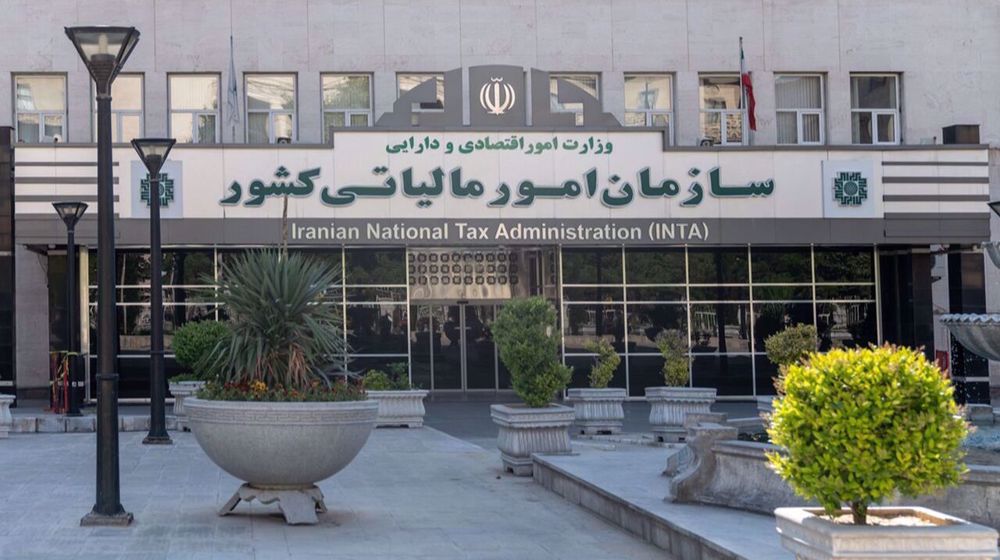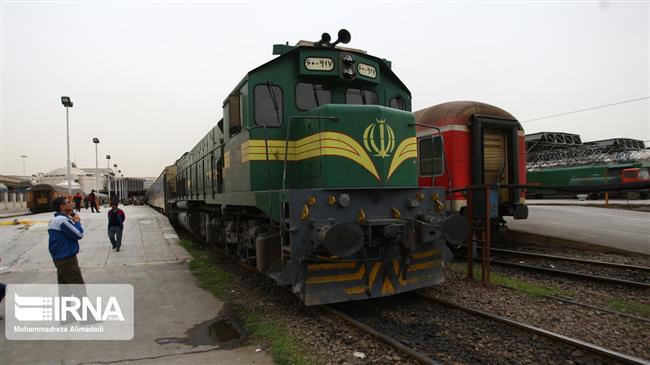Iran's first export consignment arrives in Afghanistan via long-awaited railroad
The first consignment of Iranian export goods has arrived in Afghanistan through the long-awaited Khaf-Herat railroad, which is slated to be officially inaugurated in coming days.
The cement shipment was transferred from Iran to Afghanistan's Herat via rail, according to Jilani Farhad, the spokesman for Herat governor.
The consignment was reportedly dispatched on a trial basis to identify possible problems and challenges on that route.
The Afghan spokesman said the railroad, which is to be opened in less than 10 days by the two countries’ high-ranking officials, will connect Afghanistan to Asian and European countries through Iran.
The railroad project is composed of four sections: one from Khaf to Sangan in Iran and the second one from Sangan to the Chah-Sorkh border crossing, each of which is 76 km long, according to the Afghan spokesman.
Farhad said the third part, 62 km long, extends from Chah-Sorkh to Afghanistan's Rozanak (or Rahzanak).
"These three sections have all been funded by Iran," he said.
The final part of the project, which has long been touted as the sole viable option to build Afghanistan’s economy, stretches all the way from Rozanak to Herat.
A group of people watching the arrival of the train said they were "very happy to see a train in their place of living for the first time ever."
They said they would "wholeheartedly" cooperate with Afghan security forces to ensure the security of the raildroad and the export consignments, as the railroad will definitely improve the economic conditions of Afghan people.
Afghanistan has almost no functioning railways, where there is less than 25 km of track in the entire country. The Afghan section of the Khaf-Herat railway built with Iran includes 114 km of track which will open a new chapter in domestic freight and passenger transportation. It will reduce the cost of moving goods across the region to a fraction of that of highway transport.
The railway will stretch to Chabahar in southeastern Iran, boosting Afghanistan’s trade and bringing in its mining sector from the cold to exploit billions of dollars in untapped mineral reserves.
High ranking officials from Iran and Afghanistan will gather at their joint border to open the line by the end of the current Iranian month in about two weeks, Iran’s Minister of Roads and Urban Development Mohammad Eslami said last week.
“With the opening of the railway line and the possibility of transporting goods by train between Iran and Afghanistan, easier conditions have been created for the transportation of goods, so we hope that this development will have positive effects on trade between the two countries,” head of Iran-Afghanistan Joint Chamber of Commerce Hossein Salimi said Tuesday.
According to Salimi, Iran’s exports to Afghanistan are estimated to reach $2.7 billion by the end of the current Persian year in March 2021.
Afghanistan remains one of the world’s poorest countries, some 19 years after the US invasion. Its main products are dried and fresh fruits, and carpets, which amount to a fraction of illegal opium estimated at some $2 billion by the International Monetary Fund.
Gold, silver and platinum are some of the precious elements identified in Afghanistan but the country has also been labeled as the potential “Saudi Arabia of lithium”, the raw material used in phone and electric car batteries.
Furthermore, the country has significant quantities of iron ore, uranium, zinc, tantalum, bauxite, coal, natural gas and copper which is increasingly becoming rare across the globe.
Projects such as the railway through Iran is believed to put a major dent in the illicit opium trade and reduce Afghanistan's reliance on foreign aid which is tied to heavy deployment of troops from the US, Europe and elsewhere.
Landlocked countries have always tried to access open seas. Afghanistan’s neighbors have indicated an interest in linking with the Khaf-Herat railway line to send cargoes to and from Iran’s Persian Gulf ports.
Uzbekistan and Afghanistan have signed an agreement to extend a railroad connecting the two countries to eventually give Uzbekistan a direct link to sea ports. Tashkent is interested in extending that line to Herat for a gateway to Iran.
Tajikistan also wants to construct a railway through Afghanistan to Iran and build an “energy line” across the three countries to supply Iranian oil products and gas, as well as to link the electricity grids of the three countries.
Iran and Afghanistan share historical and cultural ties and Iran has been hosting millions of Afghan refugees and immigrants who fled the Soviet–Afghan war, its ensuing civil war, and the US war in Afghanistan.
The Islamic Republic has also spent millions of dollars on development and reconstruction projects in Afghanistan. It has built hundreds of kilometers of highway, and railroad and dams over the last eight years, paving the ancient trade routes of the Silk Road.
Israel's new settlement expansion plan triggers global condemnation
UN condemns Israeli raid on UNRWA headquarters in al-Quds
VIDEO | Israel reeling under al-Aqsa Flood
Wife of martyred Palestinian doctor urges pressure on Israel to return his body
IranAir brings three grounded jets back to fleet
Medical conditions in Gaza remain 'as hard as ever' despite truce: MSF chief
Israel holding 32 Gaza detainees past their sentences: Advocacy group
VIDEO | Americans push for second phase, Zionists dragging feets












 This makes it easy to access the Press TV website
This makes it easy to access the Press TV website